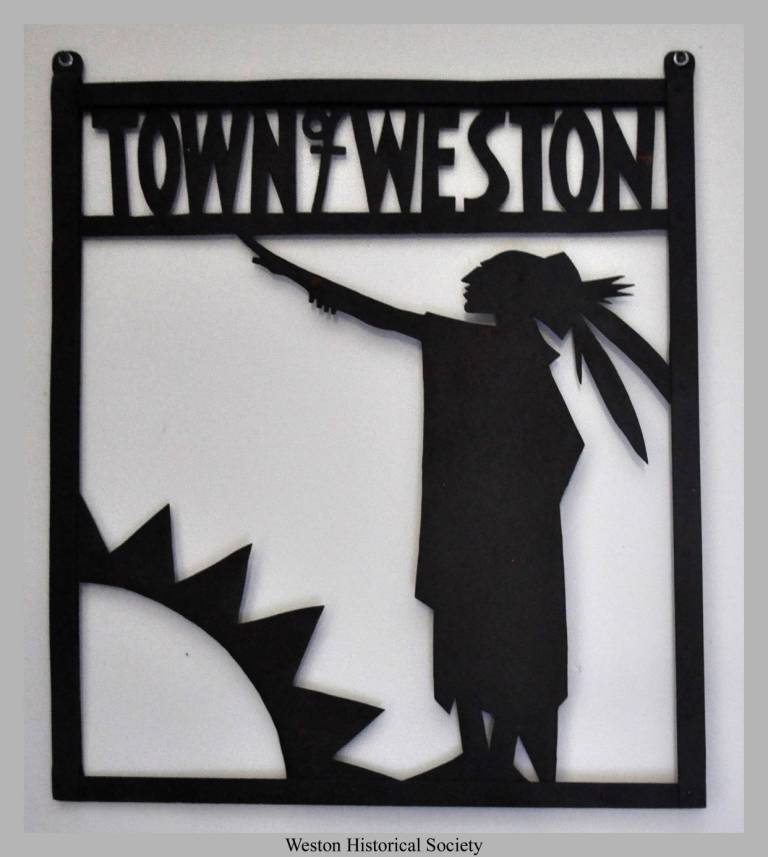
A Brief History of Weston
The first inhabitants of this area were Indigenous peoples from the Paugausset tribe. These were Alogonquian-speaking peoples who lived a semi-nomadic life, traveling in small groups in search for seasonal sources of food. The spring and summer months were spent at the coast where food was plentiful. They would then move inland to this area for hunting and to shelter from Winter storms. Weston has always been synonymous with farming. The indigenous peoples who lived here farmed maize (corn), squash and beans. Smallpox, measles and other diseases brought by Dutch traders as well English settlers severely decimated the population of Paugaussets in the area by the time Englishman, Roger Ludlow claimed their land in 1639. That land would soon become known as Fairfield. Weston was eventually carved out of Fairfield.
The settlers that Ludlow brought to his new settlement were English Puritans who struck out from the settlements of Hartford and Windsor. They brought with them the medieval economic and social system they left behind in England. The system was based upon land, the more land owned the more power and status the landholder had. It also meant access to more lumber, firewood, and land that could be cleared for planting, as well as pastures for grazing. It also meant the more land one had, the more one could pass on to sons. The 'long lots' system of division was used to distribute the land starting around 1671.
These 'long lots' were about thirteen and a half miles long and ranged in width from fifty feet to over 1,000 feet. Residents who already had sizable land holdings in the center of town typically received the widest 'long lots'. The first upright highway was established in 1692 however it was but a rutted path. The first cross highway is in what is now Westport is now called Cross Highway. The cross highways were not completed until 1758.
Weston was far from the town center of Fairfield, and along with the work of clearing the land and dealing with the rocky soil, these properties were considered useful, but not desirable. The Weston properties were therefore given to 2nd and 3rd sons, who along with others would become known as Outlivers. "Eventually some of those who dwelt temporarily in Weston decided to make the traumatic move, decided to leave friends and family and meetinghouse and schools and whatever conveniences they had known to become Outlivers. Those who moved out tended to be less well to do than those who remained behind. If one owned sufficient land in town, there was no reason to leave...the land near the town's center was more valuable than the wilderness" (Farnham)
In 1757, these Outlivers petitioned Fairfield to establish Norfield Parish, a community which would have it's own church and school. By the late 1780s, Norfield Parish wanted to become its own town, officially separating from Fairfield. However, Norfield lacked sufficient population to be incorporated as a town. Representatives from Norfield Parish began to talk to representatives from North Fairfield Parish (early Easton) about joining forces and applying jointly for incorporation. Finally, in October of 1787, the General Assembly voted to create the town of Weston (which included what would become Easton). Eventually, this marriage of convenience would end in 1845 when the General Assembly agreed to separate Weston into two towns, Weston and Easton.
The early – mid 1800s, Weston saw a growth in farming as well as industry. Mills, factories and foundries sprung up along the Saugatuck and Aspetuck Rivers. Saw mills, grain mills, iron foundries, tanneries, button, shirt and hat factories as well as the Bradley Edge Tool Factory.
However the cost of doing business in essentially a remote area took its toll. The cost of shipping both raw materials and finished products between Saugatuck and Weston put businesses at a great disadvantage to factories located on a seaport or directly near a railroad line.
Farming was affected as well. Once the railroad began to expand across the country, produce from the Midwest could be shipped to the east coast easily and cost effectively. Large mid-western farms could undersell Weston farm produce and still make a profit. The onion blight of the early 20th century took its toll on farming and by the end of World War I, abandoned farm land was cheap enough for artists and writers seeking an escape from New York City to visit and settle in Weston.
By the 1930's Fairfield residents were pressing for a parallel road to the Post Road, thus the Merritt Parkway was built. Weston was able to take advantage of being close to the Merritt, yet not too close. The town remained quiet and bucolic, enticing people away from the noise and din of the New York City to establish roots in this quiet town.
